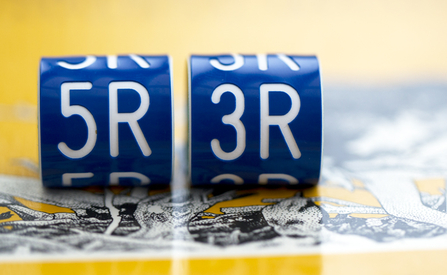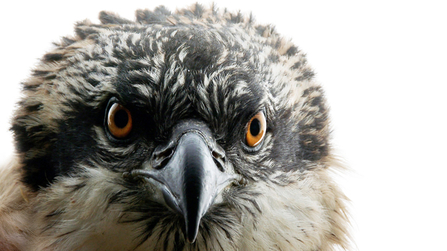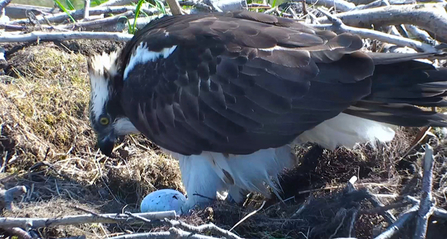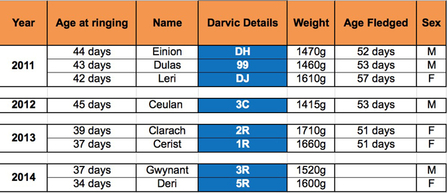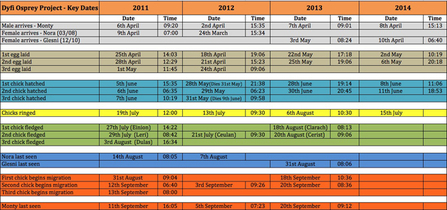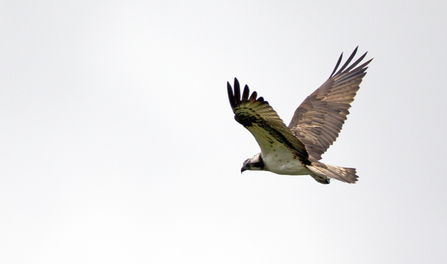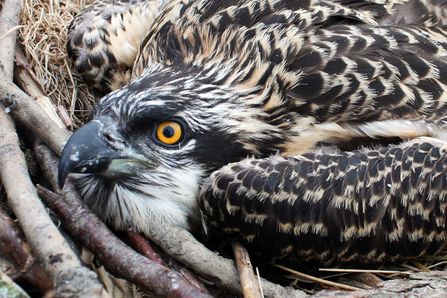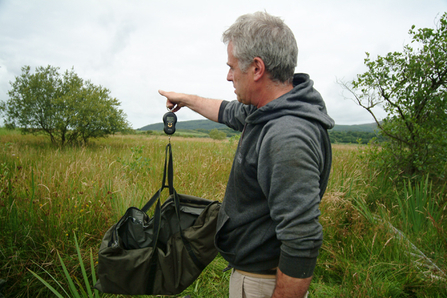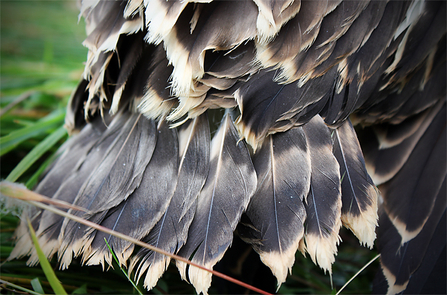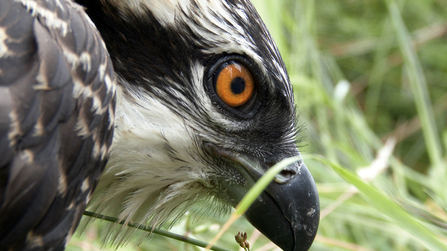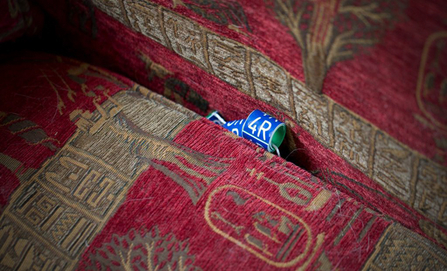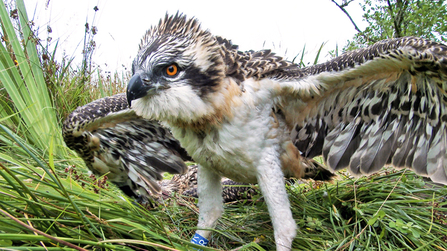Early on Tuesday morning, July 15th, both the osprey chicks were ringed, weighed, measured, sexed and named. We have one male and one female.
We placed one plastic (Darvic) ring on the right leg (left leg in Scotland) and a British Trust for Ornithology ring on the left leg. The Darvic rings were Blue 3R and Blue 5R and these were placed 'reading up' - that is, the number nearest the foot.

